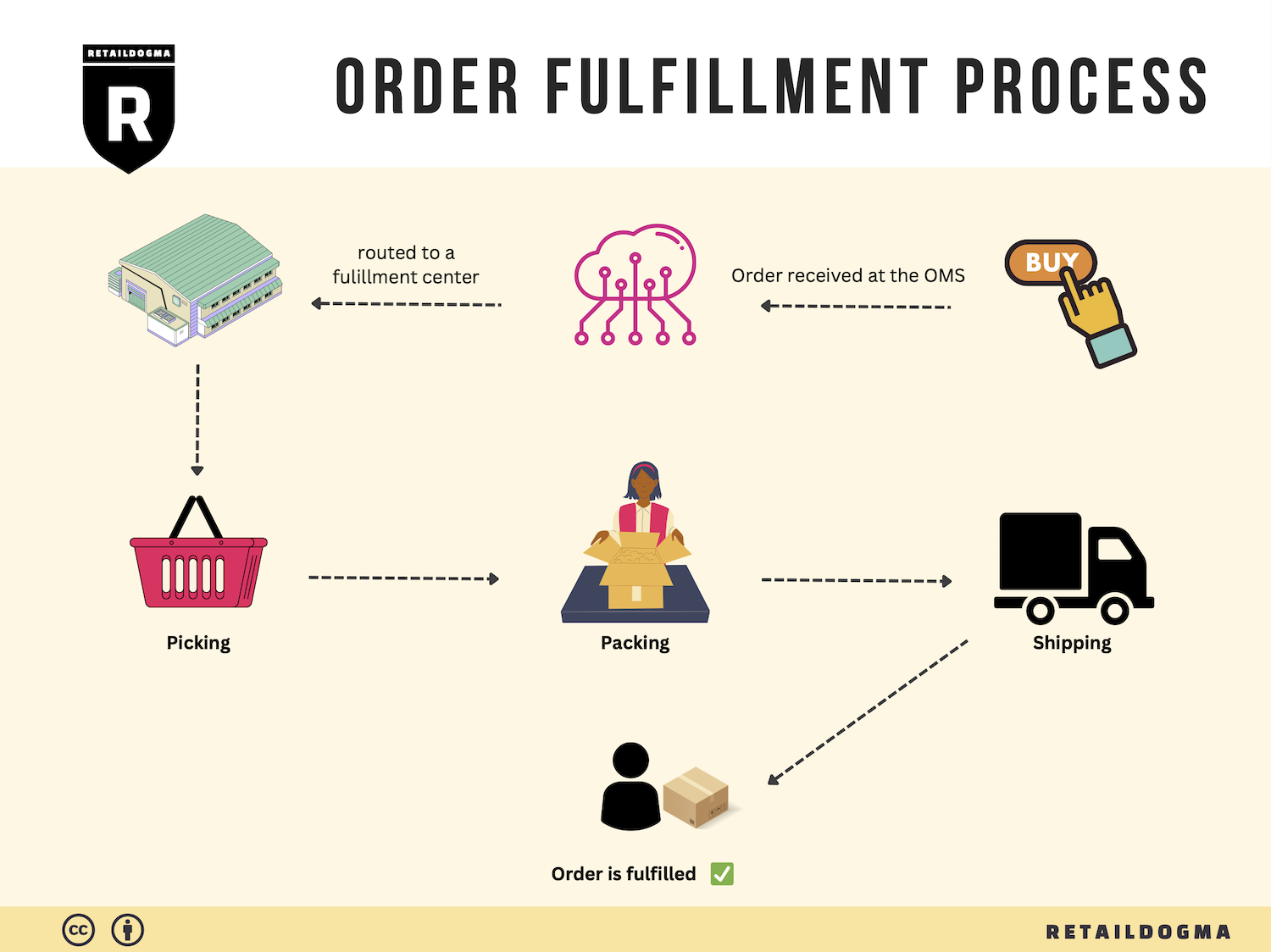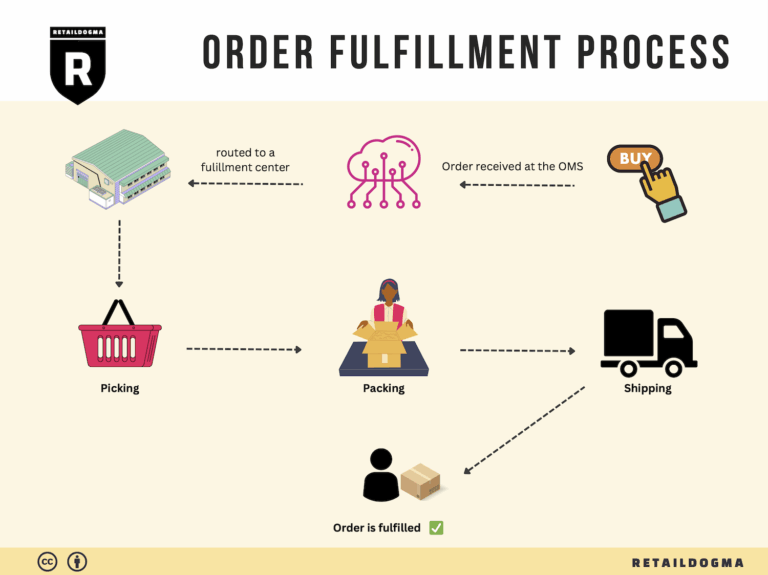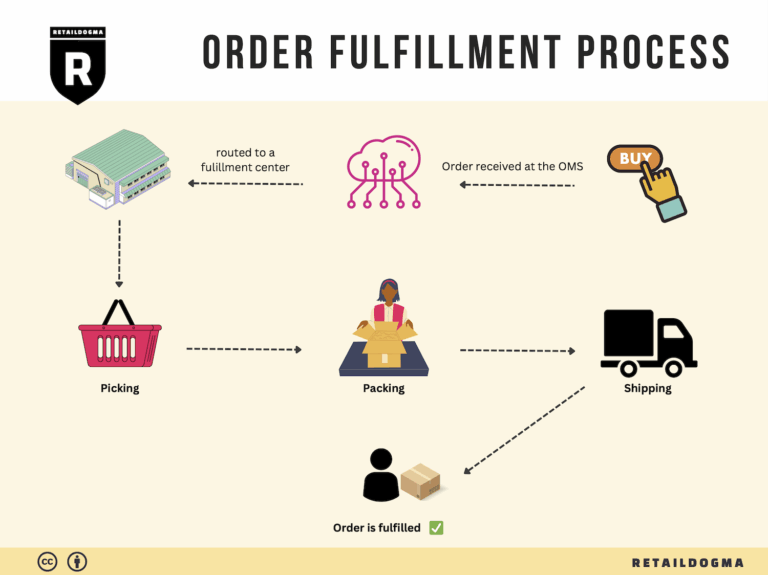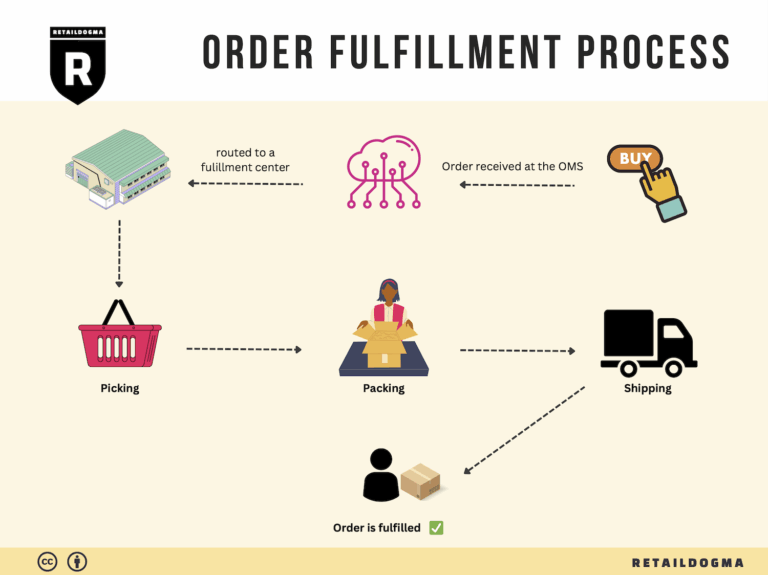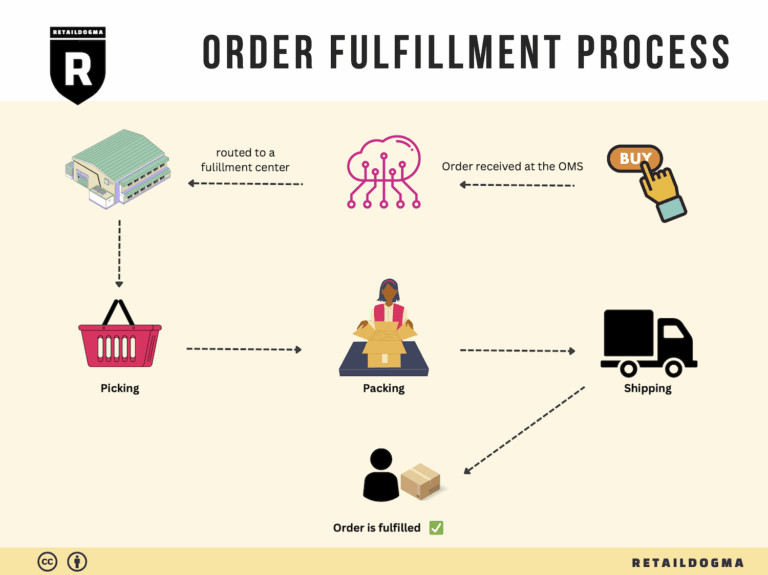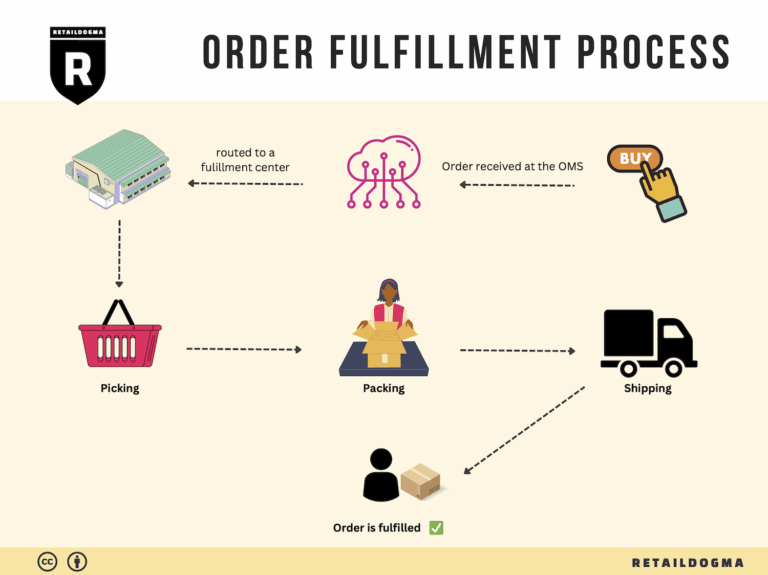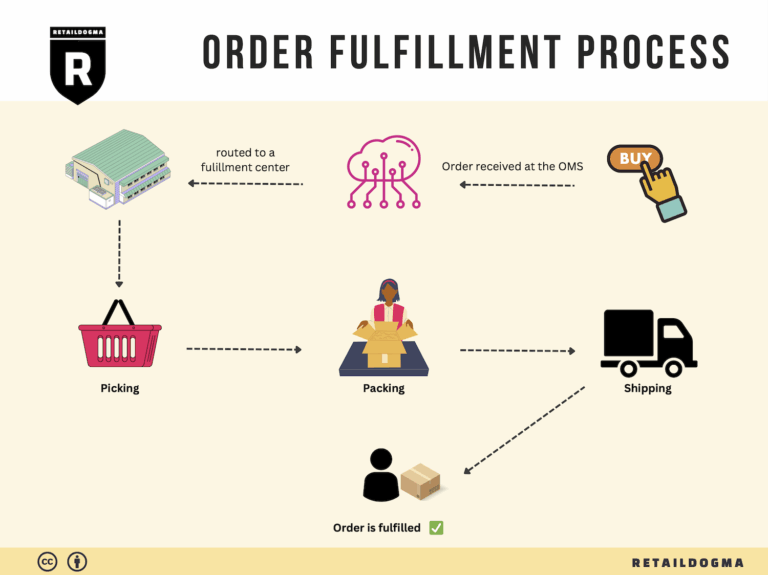What Is A Fulfillment Center? A Complete Guide (2025)
What is E-commerce Fulfillment? An Introduction for Growing Businesses
As e-commerce businesses grow, many owners find themselves grappling with the logistical challenges of packing and shipping orders. The excitement of increasing sales can quickly turn to stress when faced with the complexities of order fulfillment. This overwhelming process often leads to a critical question: how can I efficiently get my products into the hands of my customers without sacrificing quality or service?
Fulfillment, in its simplest form, refers to the entire process of getting a product from your warehouse or store to your customer’s doorstep. It encompasses everything from inventory management and order processing to packaging and shipping. For growing businesses, mastering this process is crucial not only for customer satisfaction but also for maintaining a scalable operation.
In this guide, we will explore the various fulfillment models available to e-commerce businesses. Whether you are considering utilizing a Third-Party Logistics (3PL) provider or leveraging Fulfillment by Amazon (FBA), understanding these options is essential for making informed decisions. Each model comes with its own set of advantages and challenges, and selecting the right one can significantly impact your operational efficiency and customer experience.
We will also delve into the core services that fulfillment partners typically offer. These services include inventory management, order picking and packing, shipping logistics, and returns processing. Knowing what to expect from a fulfillment partner can help you align your business needs with the right services and support.
Choosing the right fulfillment partner is a critical step in your scaling journey. We will provide practical tips on evaluating potential partners based on factors such as reliability, technology integration, and customer service. Additionally, understanding pricing structures is vital to ensuring that your fulfillment strategy remains cost-effective as your business expands.
Ultimately, this guide aims to empower e-commerce business owners, operations managers, and entrepreneurs to make smart, strategic decisions about their logistics. By equipping yourself with the right knowledge and tools, you can navigate the complexities of e-commerce fulfillment and focus on what truly matters: growing your business and delighting your customers.
What You’ll Learn In This Guide
- What is E-commerce Fulfillment? An Introduction for Growing Businesses
- The Order Fulfillment Process: From ‘Buy’ Button to Customer’s Door
- Comparing Fulfillment Models: In-House vs. 3PL vs. Dropshipping
- A Deep Dive into Amazon FBA: Pros, Cons, and Who It’s For
- Core Services Offered by Fulfillment Centers
- How to Choose a Fulfillment Partner: A 6-Point Checklist
- Understanding Fulfillment Pricing: A Breakdown of Common Fees
- Frequently Asked Questions (FAQs) about Fulfillment
- Conclusion: Is Outsourcing Fulfillment the Right Move for Your Business?
- Important Disclaimer
The Order Fulfillment Process: From ‘Buy’ Button to Customer’s Door
1. Receiving Inventory
The order fulfillment process begins with receiving inventory. This step involves the physical delivery of products to your warehouse or fulfillment center. Upon arrival, the items are checked against purchase orders to ensure accuracy—this is where the concept of SKU (Stock Keeping Unit) comes into play. Each product should have a unique SKU that simplifies tracking and inventory management.
Why It’s Important: Proper receiving practices are crucial for maintaining accurate inventory levels and preventing stock discrepancies. Errors at this stage can lead to significant issues down the line, such as stockouts or overstock situations, which can negatively impact customer satisfaction and sales.
Key Term: SKU – A unique identifier for each product that helps streamline inventory management.
2. Warehouse Storage
Once inventory is received, the next step is warehouse storage. Products are organized and stored in designated areas within the warehouse. This organization can be based on various factors such as product type, size, or sales frequency. Effective storage solutions often employ ABC analysis, which categorizes inventory into three classes (A, B, and C) based on their importance and turnover rates.
Why It’s Important: Proper storage enhances the efficiency of order fulfillment by making products easy to find and retrieve. A well-organized warehouse minimizes the time spent searching for items, which is essential for fast order processing, particularly during peak sales periods.
Key Term: ABC Analysis – A method for categorizing inventory based on importance and sales frequency to optimize storage and retrieval.
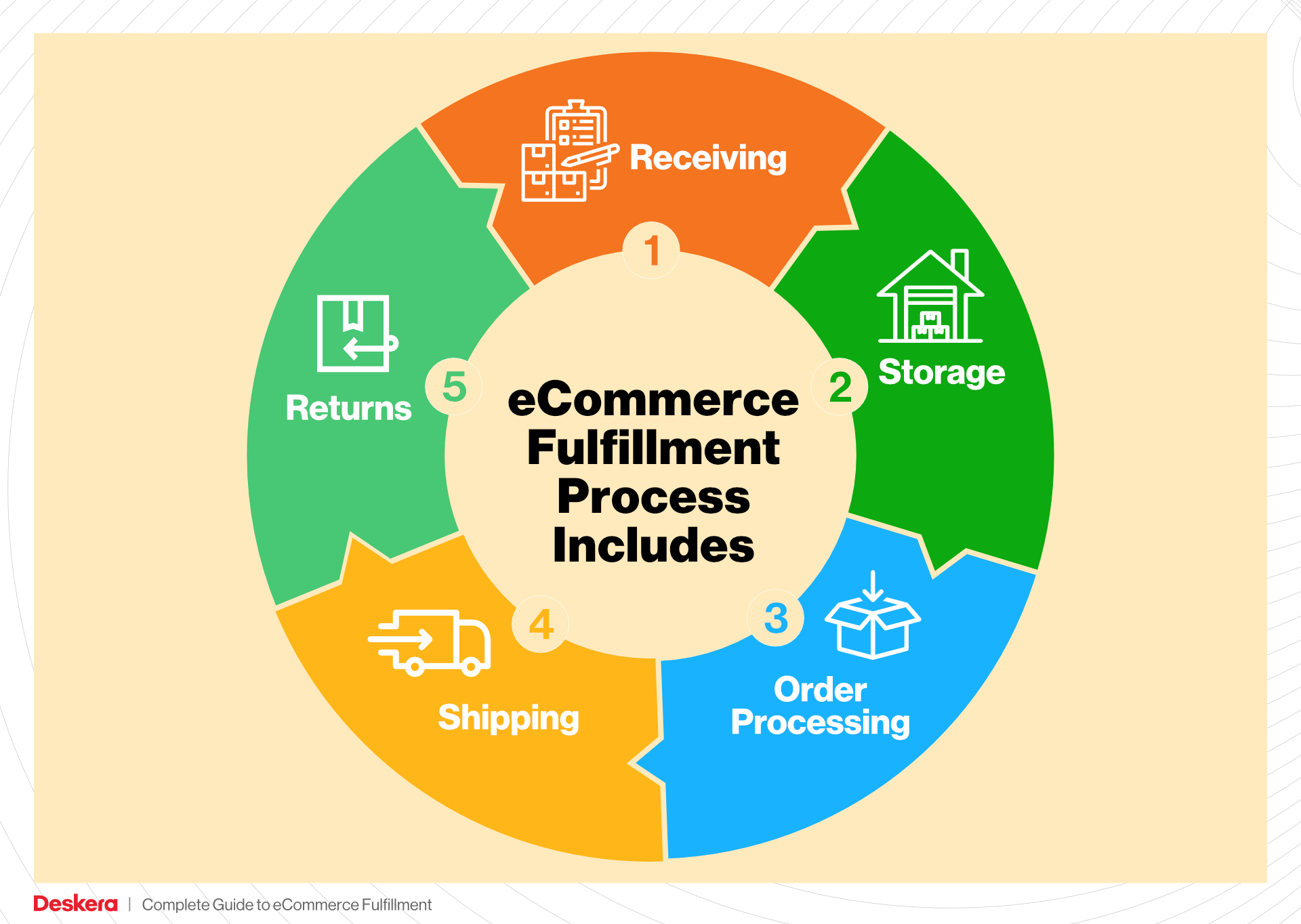
3. Order Picking
After an order is placed, the next step is order picking. This process involves retrieving the items from their storage locations based on the details in the customer’s order. Businesses often utilize pick lists, which are documents that outline the items to be collected, including their locations and quantities.
Why It’s Important: Efficient order picking is vital for reducing order lead times and improving overall customer satisfaction. The speed and accuracy of this step directly affect the fulfillment process’s effectiveness. Implementing technologies like barcode scanning can further enhance accuracy and efficiency in this stage.
Key Term: Pick List – A document or digital tool that guides warehouse staff on which items to retrieve for fulfilling customer orders.
4. Order Packing
Once items have been picked, they move to the order packing stage. Here, products are carefully packed for shipment, ensuring they are protected during transit. This step may involve selecting appropriate packaging materials, applying shipping labels, and including any necessary documentation such as invoices or return labels.
Why It’s Important: Proper packing prevents damage during shipping and ensures that the customer receives their order in perfect condition. Additionally, well-packed orders can minimize shipping costs by optimizing space and weight, which is crucial for maintaining profitability.
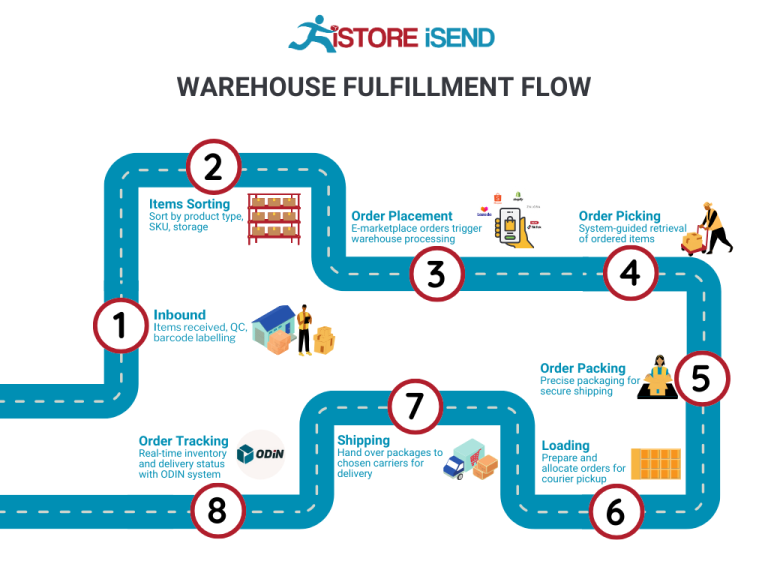
Key Term: Packaging Materials – Various materials (boxes, bubble wrap, packing peanuts) used to protect products during shipping.
5. Shipping & Delivery
The final step in the order fulfillment process is shipping and delivery. After packing, orders are handed off to shipping carriers for delivery to the customer. Businesses need to select reliable carriers and shipping methods that align with customer expectations for speed and cost. Tracking systems should also be implemented to provide customers with real-time updates on their order status.
Why It’s Important: The shipping and delivery stage is critical as it represents the final touchpoint with the customer. Delays or issues at this stage can lead to dissatisfaction, affecting repeat business and brand reputation. Offering multiple shipping options can also enhance customer experience.
Key Term: Tracking System – A method for monitoring the status of shipments, allowing both the business and customers to stay informed about order progress.
By following these five steps—receiving inventory, warehouse storage, order picking, order packing, and shipping & delivery—e-commerce businesses can streamline their order fulfillment processes, ultimately leading to improved customer satisfaction and operational efficiency. Adopting best practices in each area is essential for scaling your business effectively in the competitive e-commerce landscape.
Comparing Fulfillment Models: In-House vs. 3PL vs. Dropshipping
Fulfillment Model Comparison
| Model | Who Handles Inventory | Best For (Business Stage) | Key Advantage | Key Disadvantage |
|---|---|---|---|---|
| In-House Fulfillment | Business Owner/Team | Startups to Established | Full control over inventory and quality | High overhead costs and operational burden |
| Third-Party Logistics (3PL) | Third-Party Provider | Growth to Established | Scalability and reduced operational burden | Less control over inventory and processes |
| Dropshipping | Supplier | Startups to Growth | Low startup costs and minimal risk | Lower profit margins and dependency on suppliers |
In-House Fulfillment
In-house fulfillment involves a business managing its own inventory and order processing. This model is ideal for companies that are either in their startup phase or have reached a certain level of maturity where they can afford to invest in warehousing, staffing, and technology. The primary advantage of this model is the complete control it provides over inventory management, order processing, and quality assurance. Businesses can ensure that products meet their standards before they reach the customer, fostering brand loyalty and customer satisfaction.
However, managing fulfillment in-house comes with significant challenges. The costs associated with maintaining a warehouse, employing staff, and investing in technology can be substantial. Additionally, as order volumes increase, businesses may find themselves stretched thin, struggling to keep up with demand, which could impact service levels. This operational burden can detract from other critical areas of the business, such as marketing and product development.
Third-Party Logistics (3PL)
Third-party logistics (3PL) involves outsourcing logistics operations to a third-party provider that specializes in supply chain management. This model is particularly beneficial for businesses that are experiencing growth and need to scale their operations quickly without the upfront investment in infrastructure. A 3PL provider handles everything from inventory storage and order fulfillment to shipping and returns.
The key advantage of using a 3PL is the scalability it offers. Businesses can expand their reach without the logistical headaches of managing warehousing and distribution themselves. This can lead to improved efficiency, as 3PL providers often have established relationships with carriers and can negotiate better shipping rates. Furthermore, they typically utilize advanced technology for tracking and inventory management, which can enhance operational efficiency.
On the downside, outsourcing fulfillment can lead to a loss of control over inventory and customer experience. Businesses must rely on their 3PL partner to meet quality standards and manage logistics effectively. Additionally, any issues with the 3PL, such as delays in shipping or inventory mismanagement, can directly impact the business’s reputation and customer satisfaction.
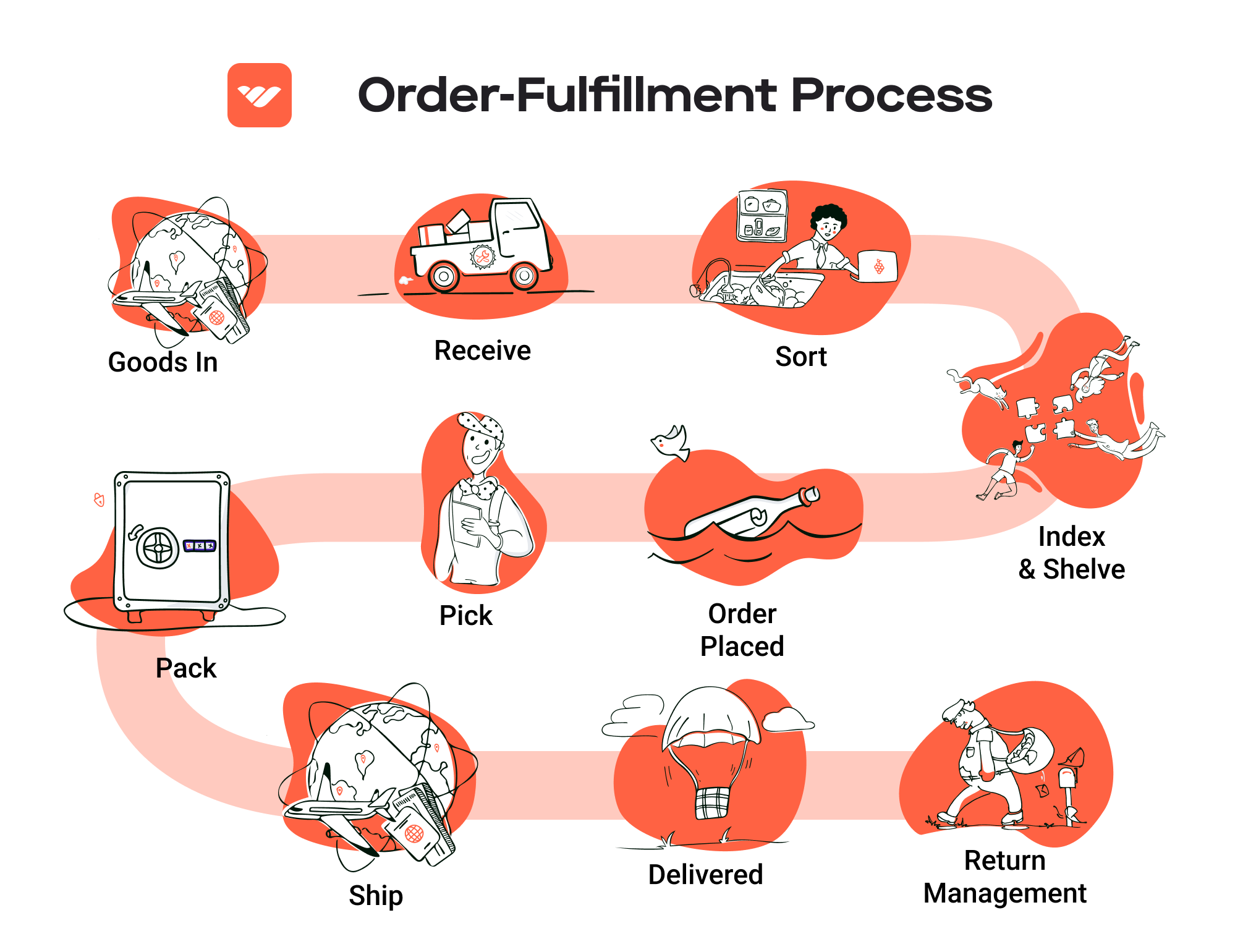
Dropshipping
Dropshipping is a fulfillment model where the retailer does not hold any inventory. Instead, when a customer places an order, the retailer purchases the item from a third-party supplier who then ships it directly to the customer. This model is particularly appealing for startups and businesses looking to minimize risk and overhead costs.
The primary advantage of dropshipping is the low startup cost. Retailers do not need to invest in inventory upfront, which allows them to offer a wider range of products without the financial burden of holding stock. This model also provides flexibility in terms of product offerings, as retailers can easily add or remove products from their catalog based on market demand.
However, dropshipping is not without its challenges. The most significant drawback is the lower profit margins, as retailers often pay a premium to suppliers for the convenience of direct shipping. Additionally, the retailer has limited control over the fulfillment process, which can lead to issues such as stockouts, shipping delays, and inconsistent product quality. This dependency on suppliers can pose risks, particularly if the supplier does not meet customer expectations, which can negatively impact the retailer’s reputation.
Conclusion
When choosing a fulfillment model, e-commerce business owners must consider their current operational capabilities, growth projections, and customer experience goals. Each model—In-House Fulfillment, 3PL, and Dropshipping—offers distinct advantages and challenges that can significantly impact the scalability and efficiency of a business. Understanding these nuances will empower entrepreneurs to make informed decisions that align with their strategic objectives and resource capabilities.
A Deep Dive into Amazon FBA: Pros, Cons, and Who It’s For
Understanding Fulfillment by Amazon (FBA)
Fulfillment by Amazon (FBA) is a service offered by Amazon that allows sellers to store their products in Amazon’s fulfillment centers. Amazon takes care of storage, packaging, shipping, and customer service on behalf of the sellers. This service enables e-commerce businesses to leverage Amazon’s extensive logistics network, providing a streamlined way to reach millions of customers.
How FBA Works
-
Setting Up an FBA Account: Sellers need to create an Amazon Seller account and enroll in the FBA program. This process involves providing business details, tax information, and setting up payment methods.
-
Product Preparation: Sellers must prepare their products according to Amazon’s guidelines, which include labeling and packaging specifications. Proper preparation ensures that products are eligible for FBA and can be efficiently processed in fulfillment centers.
-
Shipping to Amazon: Once products are prepared, sellers ship them to designated Amazon fulfillment centers. Amazon provides shipment plans and guidelines to help sellers determine how many units to send and where to send them.
-
Storage and Management: After arrival, products are stored in Amazon’s warehouses. Sellers can monitor inventory levels and sales through the Amazon Seller Central dashboard.
-
Order Fulfillment: When customers place orders, Amazon picks, packs, and ships the products directly to them. This process is automated and typically allows for fast shipping, including options for Amazon Prime members.
-
Customer Service and Returns: Amazon handles all customer service inquiries and manages returns, allowing sellers to focus on growing their business instead of dealing with logistical challenges.
Pros of Using FBA
-
Prime Eligibility: Products fulfilled by Amazon are automatically eligible for Amazon Prime, increasing their visibility and attractiveness to millions of Prime members who prefer fast and free shipping. This can significantly boost sales.
-
Customer Trust: Using FBA enhances customer trust. Customers know that Amazon will handle their orders, which includes reliable shipping and customer service. This trust can lead to higher conversion rates for sellers.
-
Multi-Channel Fulfillment: FBA can be used to fulfill orders from other sales channels, not just Amazon. Sellers can integrate their FBA inventory with their own websites or other marketplaces, streamlining logistics and inventory management.
-
Scalability: FBA allows sellers to scale their businesses without the need for significant upfront investment in warehousing or logistics. As sales increase, sellers can send more inventory to Amazon to meet demand.
-
Time Savings: By outsourcing fulfillment, sellers can save significant time and effort, allowing them to focus on marketing, product development, and customer engagement.
Cons of Using FBA
-
High Fees: FBA comes with various fees, including storage fees (for holding inventory) and fulfillment fees (for picking, packing, and shipping). These costs can add up, particularly for low-margin products, affecting profitability.
-
Strict Inventory Rules: Amazon has stringent rules regarding inventory management, including limits on the number of units that can be stored and requirements for product condition and packaging. Non-compliance can lead to penalties or removal of inventory.
-
Commingling Risks: FBA operates on a commingling model, where inventory from different sellers may be stored together. This can lead to risks such as receiving the wrong product or having issues with counterfeit goods affecting seller reputation.
-
Limited Control over Fulfillment: Once products are in Amazon’s hands, sellers have limited control over how their products are stored and shipped. Any errors in fulfillment can impact customer satisfaction and seller ratings.
-
Dependency on Amazon: Relying on FBA means sellers are heavily dependent on Amazon’s policies and algorithms. Changes in fees, shipping rules, or account status can significantly affect a seller’s business.
Who is FBA Best For?
Fulfillment by Amazon is ideally suited for:
-
E-commerce Startups: New businesses looking to enter the market quickly without investing heavily in logistics can benefit from FBA’s streamlined process.
-
Brands Seeking National Reach: Companies wanting to expand their reach across the U.S. can leverage Amazon’s logistics network to ensure fast shipping and customer satisfaction.
-
Businesses with High Sales Volume: Sellers with high sales volume can benefit from economies of scale, making the fees associated with FBA more manageable and profitable.
-
Products with Steady Demand: Sellers with products that have consistent sales patterns can optimize their inventory management and reduce storage costs with FBA.
-
Multi-Channel Sellers: Businesses that sell on multiple platforms and want a centralized fulfillment solution can use FBA to streamline operations across their online presence.
In conclusion, while FBA offers numerous advantages, including enhanced visibility, customer trust, and logistics efficiency, it is essential for sellers to weigh these benefits against the associated costs and risks. Understanding the dynamics of FBA will help businesses make informed decisions about their fulfillment strategies and ultimately drive growth in their e-commerce operations.
Core Services Offered by Fulfillment Centers
Inventory Management & Warehousing
Fulfillment centers play a pivotal role in inventory management and warehousing, providing e-commerce businesses with essential storage solutions that streamline operations. This service encompasses the efficient storage of products in a secure environment, where inventory levels are monitored in real-time. Fulfillment centers utilize advanced inventory management software that integrates with e-commerce platforms, allowing business owners to keep track of stock levels, forecast demand, and automate reordering processes.
The benefits of robust inventory management and warehousing are manifold. First, businesses can reduce overhead costs by only paying for the space they need, rather than maintaining a large warehouse of their own. This flexibility is particularly advantageous for seasonal or fluctuating sales patterns common in the sports and outdoor equipment sector. Second, optimized inventory management reduces the risk of stockouts or overstock situations, ensuring that popular items are always available for customers, which directly contributes to customer satisfaction and retention. Lastly, effective warehousing practices lead to faster fulfillment times, as products are organized logically and can be quickly retrieved for shipping.
Pick and Pack Services
The pick and pack service is a cornerstone of fulfillment operations, involving the selection (picking) of products from the warehouse and packaging (packing) them for shipment to customers. Fulfillment centers employ systematic processes and technology, such as barcode scanning and mobile picking devices, to ensure accuracy and efficiency in this critical step.
For e-commerce businesses, the advantages of utilizing pick and pack services are significant. It allows for scalability—fulfillment centers can handle fluctuating order volumes seamlessly, from small batch orders to large-scale distribution. This is especially beneficial for businesses experiencing growth or seasonal spikes in demand. Furthermore, outsourcing this process minimizes labor costs and training requirements for in-house staff, freeing up resources to focus on core business activities such as marketing and product development. Additionally, the ability to customize packaging options can enhance brand identity and improve the unboxing experience for customers, fostering brand loyalty.
Kitting and Assembly
Kitting and assembly services involve grouping various products into a single package or preparing items for sale as a complete kit. This might include bundling related items (e.g., a fishing rod with tackle and bait) or assembling parts into a finished product (e.g., a camping gear set). Fulfillment centers can efficiently manage this process, ensuring that all components are included and correctly assembled before shipment.
The benefits of kitting and assembly are particularly relevant for businesses in the outdoor and sporting goods sector. By offering product bundles, companies can increase average order value and encourage upselling. Kitting also simplifies the purchasing process for customers, making it easier for them to acquire everything they need in one transaction, which enhances the overall shopping experience. Moreover, fulfillment centers that specialize in kitting can help businesses reduce packaging waste and optimize shipping costs by consolidating multiple items into one shipment, leading to both cost savings and a reduced environmental impact.
Returns Management (Reverse Logistics)
Returns management, or reverse logistics, is an essential service provided by fulfillment centers that focuses on handling product returns and exchanges. This process involves receiving returned items, inspecting their condition, restocking inventory, and managing the associated paperwork and refunds. Efficient returns management is crucial for maintaining customer satisfaction and loyalty.
For e-commerce businesses, having a streamlined returns process offers several advantages. First, it builds trust with customers, as a hassle-free return policy can significantly influence purchasing decisions. This is particularly important in the sporting goods industry, where customers may need to try products before committing to a purchase. Furthermore, effective returns management allows businesses to quickly process returns and restock items, minimizing losses and optimizing inventory turnover. Finally, analyzing return data can provide valuable insights into product performance and customer preferences, enabling businesses to make informed decisions about inventory and product offerings.
In conclusion, leveraging the core services of fulfillment centers—inventory management and warehousing, pick and pack services, kitting and assembly, and returns management—can significantly enhance an e-commerce business’s operational efficiency, customer satisfaction, and scalability. By partnering with a fulfillment center, businesses can focus on growth and innovation while leaving the complexities of logistics in capable hands.
How to Choose a Fulfillment Partner: A 6-Point Checklist
Location & Warehouse Network
When selecting a fulfillment partner, the geographic location of their warehouses is critical. The closer the warehouse is to your customer base, the lower your shipping costs and delivery times will be. This can significantly enhance customer satisfaction and reduce the likelihood of abandoned carts due to high shipping fees.
Questions to Ask:
– Where are your warehouses located, and how many do you operate?
– How do you determine which warehouse will fulfill an order?
– Can you accommodate international shipping if my business expands?
Technology & Integrations
In today’s digital landscape, a robust technology platform is essential for seamless operations. Your fulfillment partner should offer a user-friendly interface and the ability to integrate with your e-commerce platform, inventory management systems, and customer relationship management (CRM) tools. This ensures that your orders, inventory levels, and customer data are always synchronized.
Questions to Ask:
– What technology do you use for order management and tracking?
– Can your system integrate with my existing e-commerce platform (e.g., Shopify, WooCommerce)?
– Do you provide real-time inventory updates and order tracking for customers?
Specializations (e.g., cold storage, oversized items)
Different products require different storage and handling methods. If your business involves specialized items—such as perishable goods requiring cold storage or oversized items needing special handling—ensure that your fulfillment partner has the necessary capabilities and experience.
Questions to Ask:
– Do you offer specialized storage solutions, such as cold storage or handling for fragile items?
– What experience do you have with my product category?
– How do you ensure compliance with any relevant regulations for specialized products?
Scalability & Capacity
As your business grows, your fulfillment needs will evolve. A good fulfillment partner should be able to scale with you, accommodating seasonal spikes in demand or ongoing growth. Understanding their capacity limits and how they handle increased order volumes is essential for long-term success.
Questions to Ask:
– How do you manage fluctuations in order volume during peak seasons?
– What is your current capacity, and how quickly can you scale if my business grows?
– Have you worked with companies of similar size and growth trajectories?
Pricing and Contracts
Transparent pricing structures are vital for budgeting and maintaining profitability. Understand the costs associated with storage, order fulfillment, shipping, and any additional services. Additionally, review the contract terms for flexibility, such as the ability to adjust services or exit the agreement without excessive penalties.
Questions to Ask:
– Can you provide a detailed breakdown of your pricing structure?
– Are there any hidden fees I should be aware of (e.g., setup fees, storage fees)?
– What are the terms for contract renewal or cancellation?
Customer Support & Reviews
Exceptional customer support can set a fulfillment partner apart, particularly in times of crisis. Look for a partner that offers responsive support and has a reputation for reliability. Research customer reviews and case studies to gauge their performance and reliability.
Questions to Ask:
– What support channels do you offer (e.g., phone, email, live chat)?
– How do you handle issues or errors in order fulfillment?
– Can you provide references or case studies from current or past clients in my industry?
Conclusion
Choosing the right fulfillment partner is a strategic decision that can significantly impact your e-commerce business’s efficiency, customer satisfaction, and bottom line. By using this checklist, you can ensure that you evaluate potential partners comprehensively, aligning their capabilities with your business goals. Take the time to ask the right questions and choose a partner that not only meets your current needs but can also grow alongside your business.
Understanding Fulfillment Pricing: A Breakdown of Common Fees
Initial Setup Fees
Initial setup fees are one-time charges that e-commerce businesses incur when they first engage a fulfillment service. These fees can vary widely based on the complexity of your inventory and the specific requirements of your business. Typically, they cover the costs associated with onboarding, which may include setting up your account, configuring software integrations, and initial inventory management.
To calculate these fees, fulfillment centers often assess the number of SKUs (stock-keeping units) you have, the complexity of your product catalog, and the required software integrations. For example, a business with a straightforward inventory of a few products may incur lower setup fees than a business with hundreds of unique items that require custom handling.
Receiving Fees
Receiving fees are charged when the fulfillment center receives and processes your inventory. This fee typically encompasses the labor and handling required to unload, inspect, and store incoming products. The cost can be calculated based on the volume of goods received, the number of pallets or boxes, and the time taken to process these items.
Fulfillment centers might charge a flat rate per pallet or box received, or they may have tiered pricing based on the volume. Businesses should consider that receiving fees can be higher during peak seasons when inventory turnover is high and additional labor is required.
Storage Fees (per pallet/bin)
Storage fees are recurring charges associated with keeping your inventory in the fulfillment center. These fees can be calculated on a monthly basis, typically charged per pallet or bin. The cost structure may vary depending on the type of items stored; for instance, bulky items may incur higher fees than smaller items.
To manage storage fees effectively, businesses should monitor their inventory turnover rates. High turnover rates may justify higher storage fees if they lead to increased sales, while slow-moving inventory can lead to unnecessary storage costs. Some fulfillment centers also impose additional fees for items that remain in storage for extended periods, so it’s essential to maintain an efficient inventory management system.
Pick & Pack Fees (per item/order)
Pick and pack fees are incurred every time an order is processed. This fee covers the labor involved in retrieving items from storage, packing them appropriately, and preparing them for shipment. Fulfillment centers typically charge a fixed fee per order, along with additional costs based on the number of items in each order.
Calculating these fees can depend on various factors, including the complexity of the packing process, the type of products being handled (e.g., fragile items may require special packing), and the volume of orders processed. Businesses should assess their order patterns to negotiate better rates, especially if they have a predictable volume of orders.
Shipping Fees
Shipping fees are one of the most significant costs associated with fulfillment. These fees cover the actual transportation of goods from the fulfillment center to the customer. Shipping costs can vary based on several factors, including the shipping method (e.g., standard, expedited), the weight and dimensions of the package, and the destination.
Fulfillment centers often have agreements with shipping carriers that allow them to offer discounted rates. Businesses should be aware of these rates and explore options for optimizing shipping costs, such as utilizing flat-rate shipping or negotiating bulk shipping agreements. Additionally, offering customers multiple shipping options can help balance cost and delivery speed.
Conclusion: Tips for Getting an Accurate Quote
When seeking an accurate quote from fulfillment centers, businesses should consider the following strategies:
-
Provide Detailed Information: Clearly outline your product catalog, including the number of SKUs, average order volume, and specific handling requirements. The more information you provide, the more accurate the quote will be.
-
Ask About Pricing Structures: Inquire about the pricing models for each fee type. Understand if the fees are flat rates or if they vary based on specific criteria.
-
Negotiate Rates: Many fulfillment centers are open to negotiation, especially for businesses that can offer consistent order volumes. Don’t hesitate to discuss potential discounts or more favorable terms.
-
Evaluate Additional Services: If you require services like custom packaging, kitting, or returns management, ask how these will affect your overall costs.
-
Request a Comprehensive Breakdown: A detailed quote that outlines each fee type will allow you to compare fulfillment options more effectively and understand where your costs will be incurred.
By following these steps, e-commerce businesses can navigate fulfillment pricing more effectively and ensure they are prepared for the costs associated with scaling their operations.
Frequently Asked Questions (FAQs) about Fulfillment
1. What is sportsman’s fulfillment?
Sportsman’s fulfillment refers to the logistics and supply chain processes specifically designed to meet the needs of businesses selling outdoor and sporting goods, such as firearms, ammunition, hunting gear, and fishing supplies. It encompasses warehousing, order processing, shipping, and customer service tailored to the unique regulations and requirements of these products.
2. What is the difference between a warehouse and a fulfillment center?
A warehouse is primarily a storage space for goods, where products are stored until they are needed. In contrast, a fulfillment center is a specialized facility that handles the entire process of receiving, processing, and delivering orders directly to customers. Fulfillment centers often include additional services like inventory management, order picking, packing, and shipping.
3. What is a 3PL?
A Third-Party Logistics (3PL) provider is a company that offers outsourced logistics services, which can include warehousing, transportation, order fulfillment, and inventory management. Utilizing a 3PL allows businesses to focus on their core operations while leveraging the expertise and resources of the logistics provider to enhance efficiency and reduce costs.
4. How much do fulfillment services cost?
Fulfillment service costs can vary widely based on several factors, including the size of the products, volume of orders, shipping distances, and specific services required (e.g., packing, labeling). Generally, costs may include storage fees, picking and packing fees, and shipping charges. It’s crucial for businesses to request quotes from multiple providers to understand the competitive landscape and find a solution that fits their budget.
5. How can I improve my fulfillment process?
To enhance your fulfillment process, consider implementing the following strategies:
– Optimize Inventory Management: Use inventory management software to track stock levels and avoid overstock or stockouts.
– Streamline Order Processing: Automate order processing to reduce manual errors and speed up fulfillment.
– Enhance Shipping Options: Offer multiple shipping methods to meet customer preferences and improve delivery speed.
– Regularly Review Performance: Analyze fulfillment metrics to identify areas for improvement and adapt your strategies accordingly.
6. What regulations should I be aware of when fulfilling firearms orders?
When fulfilling firearms orders, it is essential to comply with federal, state, and local regulations. This includes ensuring that all firearms are shipped following the Bureau of Alcohol, Tobacco, Firearms and Explosives (ATF) guidelines, conducting background checks where required, and adhering to age restrictions. Consulting with legal experts in firearms regulations is advisable to ensure compliance.
7. How do I handle returns in my fulfillment process?
An effective return process is vital for customer satisfaction. Here are steps to manage returns:
– Establish a Clear Return Policy: Clearly outline the conditions under which returns are accepted.
– Provide Return Shipping Labels: Offer pre-paid return labels to simplify the return process for customers.
– Inspect Returned Items Promptly: Quickly assess returned products to restock or process refunds, ensuring efficient inventory management.
8. Can fulfillment services help with international shipping?
Yes, many fulfillment service providers offer international shipping options. They can assist with customs documentation, tariffs, and compliance with international shipping regulations. Businesses should partner with a fulfillment center experienced in international logistics to navigate the complexities of cross-border shipping effectively.
9. What technologies should I consider for my fulfillment operations?
Key technologies to consider include:
– Inventory Management Systems: To track stock levels and automate reordering.
– Order Management Systems (OMS): To streamline order processing and tracking.
– Warehouse Management Systems (WMS): To optimize warehouse layout and improve picking efficiency.
– Shipping Software: To compare shipping rates and print labels easily.
10. How can I choose the right fulfillment partner?
When selecting a fulfillment partner, consider the following criteria:
– Experience in Your Industry: Look for providers familiar with the specific needs of sportsman’s fulfillment.
– Technology and Integration Capabilities: Ensure they use modern technology that can integrate with your e-commerce platform.
– Scalability: Choose a partner that can grow with your business as order volumes increase.
– Customer Service: Assess their responsiveness and support capabilities, especially given the complexity of fulfilling regulated products like firearms.
Conclusion: Is Outsourcing Fulfillment the Right Move for Your Business?
Assessing the Benefits of Outsourcing Fulfillment
Outsourcing fulfillment can be a game-changing decision for e-commerce businesses, especially in the competitive landscape of sportsman’s fulfillment. By leveraging the expertise and infrastructure of a third-party provider, businesses can experience significant benefits that drive growth and efficiency.
One of the foremost advantages is time savings. By outsourcing fulfillment, you free up valuable hours that can be redirected toward strategic initiatives such as marketing, product development, and customer engagement. This focus is crucial, especially as your business scales and customer expectations evolve.
Scalability is another vital benefit. As demand fluctuates, a fulfillment partner can quickly adapt to changes in order volume without the need for substantial capital investment in additional facilities or staff. This flexibility allows you to seize growth opportunities without the operational headaches that often accompany increased sales.
Moreover, partnering with a fulfillment service grants access to industry expertise. These providers are specialists in logistics, often equipped with advanced technology and systems that streamline processes, improve order accuracy, and enhance customer satisfaction. Their knowledge of regulations, especially in niche markets like firearms and outdoor equipment, can also help mitigate compliance risks.
However, it’s critical to choose the right fulfillment partner. The success of this strategy hinges on finding a provider that aligns with your business goals and understands your unique needs. Conduct thorough research, evaluate potential partners based on their capabilities, and consider their experience in your specific industry.
Next Steps for Your Business
To determine if outsourcing fulfillment is the right move for your business, conduct an audit of your current shipping process. Identify pain points, inefficiencies, and areas where you could benefit from expert assistance. This assessment will help you make an informed decision and pave the way for strategic growth. Embrace the potential of outsourcing fulfillment and position your business for success in the ever-evolving e-commerce landscape.
Important Disclaimer
⚠️ Important Disclaimer
The information in this guide is for educational purposes. Fulfillment services, pricing, and platform features change frequently. Always conduct your own due diligence and consult with providers directly before making business decisions.
